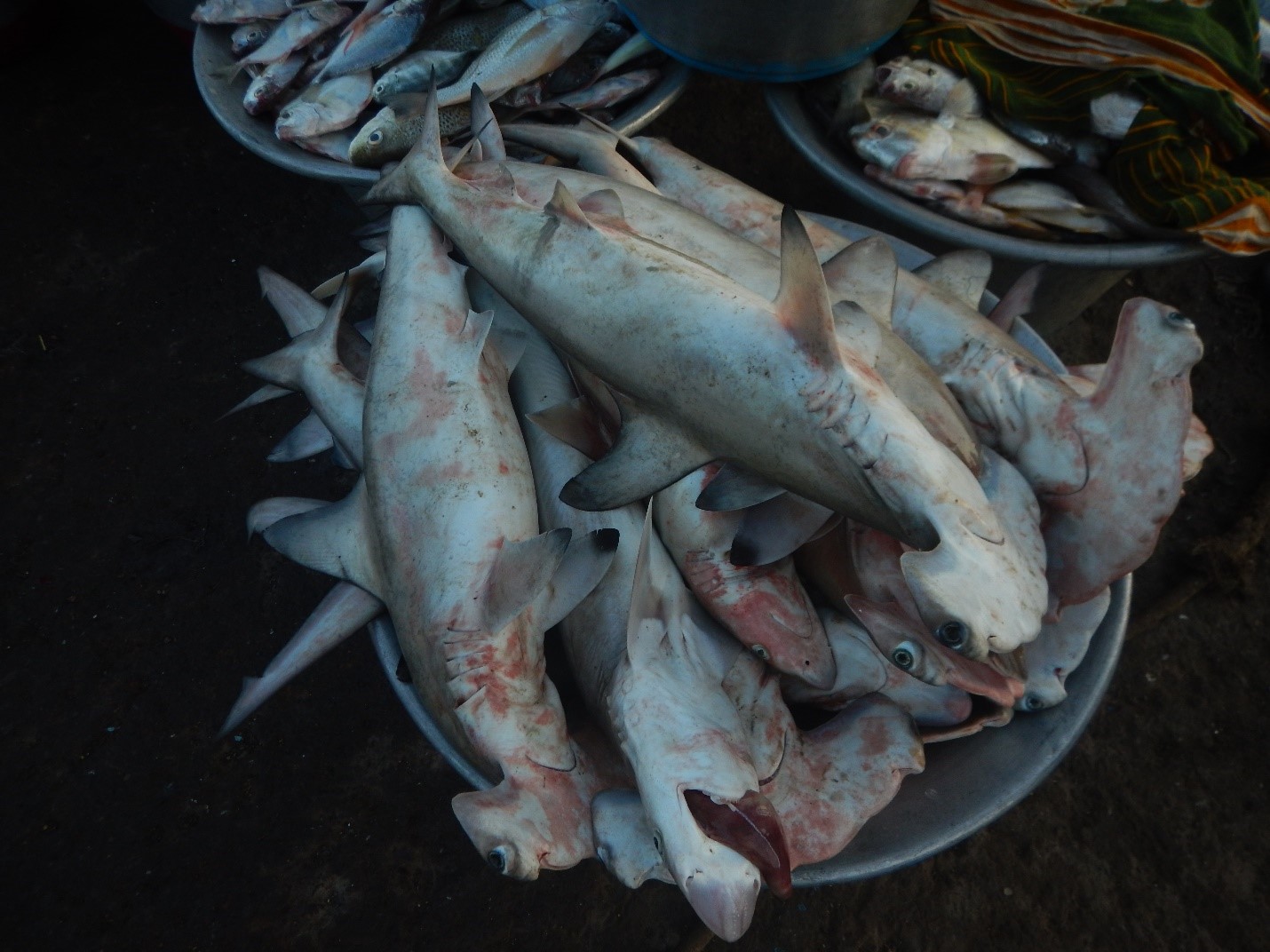
India is ranked as the second largest shark harvester of the world with sharks caught in a targeted and bycatch fishery in the Andaman Islands of India. The Andaman Islands are located in the Bay of Bengal, are recognized to be a marine biodiversity hotspot, and are also designated as a ‘Hope Spot’ by the IUCN (International Union for Conservation of Nature) and Mission Blue. The Islands form up to 29.7 per cent of India’s exclusive economic zone, with the fisheries here forming an important source of livelihood, providing food security and employment to the coastal communities, and forms an important resource for the economy of the islands.
Past marine fish reconstructions have estimated around 60,000 tonnes of sharks and rays were landed from commercial and artisanal fisheries in 2000, with anecdotal reports from fishers indicating that shark populations have drastically declined. Prior to the 1980s, there was no impetus to develop a targeted shark fishery due to the lack of local demand for shark meat and fins. However, from the 1980s onwards, as consumption of shark meat and the fin industry developed on peninsular India for local consumption and export outside India, shark fisheries on the islands developed to supply to the export market. Despite the expanding fishery, we continue to lack some very basic information on sharks found in these waters. With this in mind, we decided to study sharks to generate a baseline. What does this entail for a developing country with rampant shark fishing?
Our days consisted of visiting the fish-landing sites at dawn so that we could catch the landings of the sharks from the boats to the docks for that day, along with auctions amongst traders and processing units to the place of purchase. After receiving permission from the fishers, we sampled the sharks landed. Sampling consisted of photo-documenting sharks to identify them to the species level, measuring the total lengths (length from snout tip to the tail tip), and determining the sex of the specimens by looking for the presence or absence of claspers, which are the male reproductive organs. Additionally, we determined the maturity of males which were assessed through the calcification levels of the claspers, where fully mature males have fully calcified hard claspers. Gravid females, which are pregnant females, were also noted, along with neonates or newborn pups through the presence or absence of an umbilical scar. Wherever possible, we also asked the fishermen where the sharks had been landed from. This allowed us to sample 4,000 shark individuals representing 36 shark species in a cost effective and efficient manner. What did we learn?
Different shark species have varied life history characteristics. Four of the shark species that dominated the fish catch were slit-eye shark (Loxodon macrorhinus), slender weasel shark (Paragaleus randalli), scalloped hammerhead shark (Sphyrna lewini), and silvertip shark (Carcharhinus albimarginatus). Starting with slit-eye, it is a small-bodied shark species with a maximum total length of approximately one meter. It is comparatively fast growing as it breeds throughout the year. Through our surveys, we found that mostly mature individuals, including gravid females were landed across the year. We also recorded males to be landed significantly more than females. This species is relatively resilient and thus can be fished at certain levels. However, a similar small sized shark species, the slender weasel shark, shows similar landing patterns, but it has different life history characteristics, where breeding in some areas is reported to be once every two years or so, and thus is more vulnerable and less resilient to fishing pressures. The silvertip shark, on the other hand, is a large, slow growing species, growing up to a maximum total length of three meters. Unlike the small sized sharks, neonates and juveniles were dominantly landed. On one occasion, we recorded landings of almost 100 – 200 neonates. This suggests that critical habitats such as nursery grounds for this species exist in these waters and are getting fished from. Scalloped hammerhead showed similar landing patterns but have varying life history characteristics. They are a migratory species that exhibit complex patterns of spatial organization, depending on the sex and life stage (juvenile versus adult), associated with the use of both coastal and oceanic habitats. Due to their schooling behavior, large groups can be harvested in short time, making them even more at risk from fishing pressures.
To develop best management practices, basic life-history information such as age, growth, and maturity is required to form the basis of population assessments. However, in many developing countries, including India, landings remain unmonitored and unregulated with little species-specific data collected, which hampers population assessments. Additionally, since different species exhibit geographic variability in biological traits, such as size at birth, size at maturity, maximum size, litter size, and breeding cycle, it is important to undertake region-specific studies so they can inform local management strategies. These findings can help us prioritize species that require protection and can help us to provide species-specific regulations for the region.










